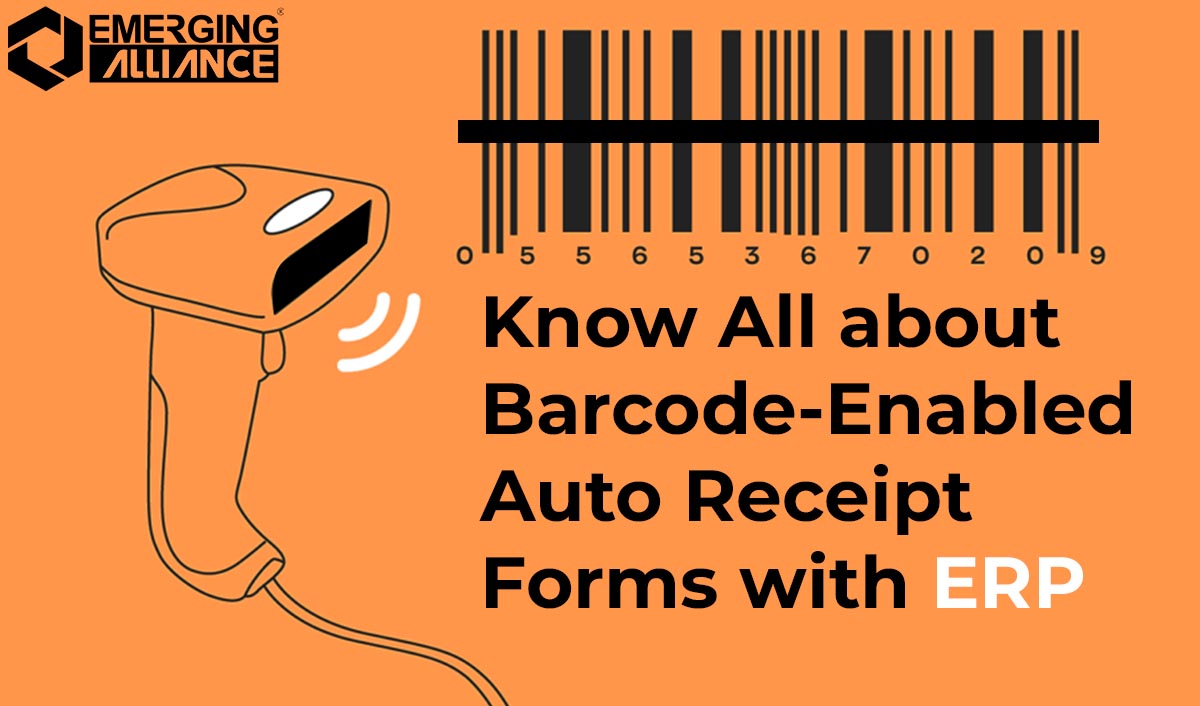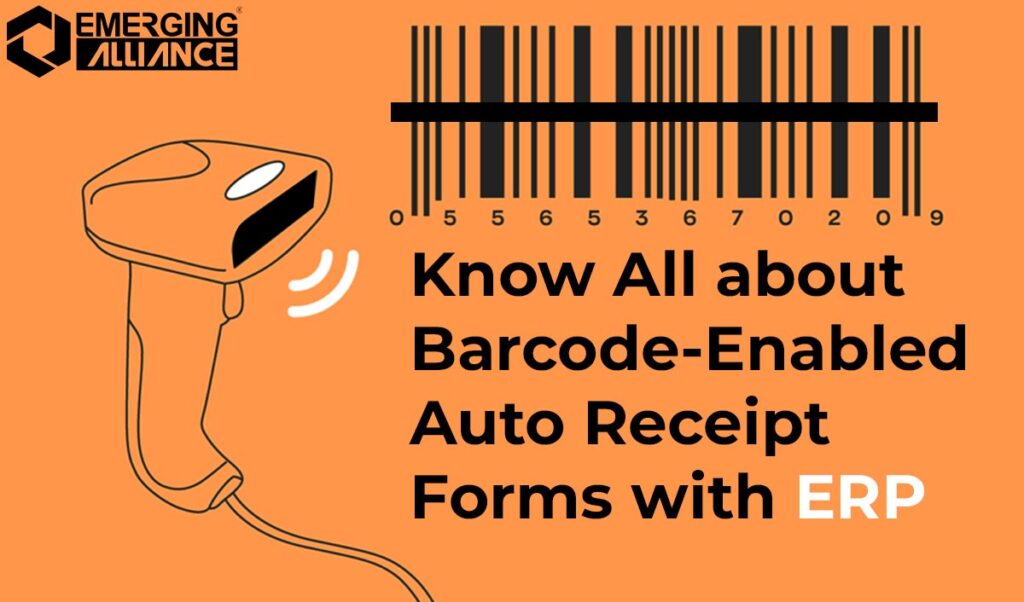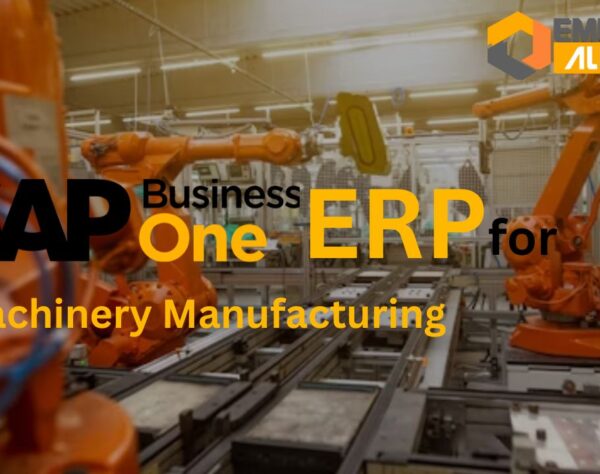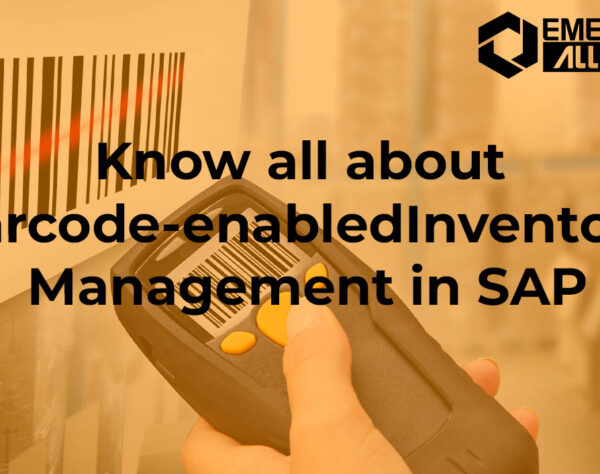
Know All about Barcode-Enabled Auto Receipt Forms with ERP

Exploring Barcode-Enabled Auto Receipt Form Production with ERP
In today’s fast-paced business environment, efficiency and accuracy are paramount, especially when it comes to managing receipts and transaction records. With the integration of Enterprise Resource Planning (ERP) systems and barcode technology, businesses can streamline their receipt form production process, ensuring seamless data capture, reduced errors, and improved productivity. In this blog post, we’ll explore how ERP and barcode-enabled auto receipt form production can revolutionize your organization’s financial operations.
How Barcode Technology Works in Receipt Form Production with ERP
Barcode technology has revolutionized the way businesses handle receipt form production, streamlining processes and enhancing efficiency. By understanding how barcode technology works in receipt form production, organizations can harness its power to optimize data capture, minimize errors, and improve overall productivity. In this article, we will explore the key components and processes involved in barcode technology for receipt form production.
Introduction to Barcodes:
Barcodes are visual representations of data that consist of a series of parallel lines, bars, and spaces. These codes store information in a machine-readable format, enabling quick and accurate data capture. In receipt form production, barcodes are used to encode essential details such as transaction IDs, product information, and dates.
Barcode Scanners and Readers:
To utilize barcode technology effectively, businesses require specialized devices called barcode scanners or readers. These devices use light sensors to read the barcode’s pattern and convert it into a digital format that can be understood by a computer system. Barcode scanners can be handheld or integrated into other devices such as smartphones or point-of-sale (POS) systems.
Generating Barcode Labels:
Before integrating barcodes into receipt forms, businesses need to generate unique barcode labels for each transaction. This can be achieved using barcode software or specialized systems integrated with the organization’s ERP or inventory management system. These systems assign a unique barcode to each product or transaction, ensuring accurate identification.
Embedding Barcodes in Receipt Forms:
Once the barcode labels are generated, they need to be embedded in the receipt forms. This can be done using various methods, such as printing the barcode directly on the form or using adhesive labels. The barcode placement should be strategically chosen for easy scanning and readability by the barcode scanners.
Scanning and Data Capture in Barcode Technology:
When a receipt is generated or received, the barcode on the form is scanned using a barcode scanner or reader. The scanner captures the barcode’s information and transmits it to the connected computer system or ERP. The data is then processed and associated with the corresponding transaction, providing an efficient and accurate way to update financial records.
Integration with ERP Systems:
To fully leverage barcode technology in receipt form production, integration with an ERP system is crucial. The ERP system receives the scanned barcode data and automatically updates the relevant transaction records, eliminating the need for manual data entry. This integration enhances data accuracy, reduces errors, and enables real-time visibility into financial transactions.
ERP Modules for Receipt Form Management – Barcode Technology
Receipt form management is a critical aspect of financial operations for businesses. Enterprise Resource Planning (ERP) systems offer dedicated modules that streamline and automate the receipt form management process. These ERP modules provide a centralized platform for capturing, organizing, and tracking receipt data, ensuring efficient and accurate financial record-keeping. In this article, we will explore key ERP modules designed specifically for receipt form management.
Receipt Capture Module with ERP:
The receipt capture module within an ERP system serves as the foundation for receipt form management. It enables businesses to capture receipt data electronically, eliminating the need for manual entry and paper-based processes. This module allows users to scan or upload receipt forms directly into the ERP system, ensuring seamless integration with other financial modules.
Integration with Accounting and Financial Modules with ERP:
ERP systems for receipt form management seamlessly integrate with accounting and financial modules. This integration enables automatic data transfer from receipt forms to general ledger accounts, accounts payable, and other financial records. By eliminating manual data entry, businesses can reduce errors, streamline reconciliation processes, and improve financial reporting accuracy.
Receipt Tracking and Auditing with ERP for Barcode:
Effective receipt form management requires robust tracking and auditing capabilities. ERP modules dedicated to receipt management enable businesses to track the status of receipts, monitor approval workflows, and maintain an audit trail. These features provide transparency and accountability throughout the receipt lifecycle, ensuring compliance with internal controls and regulatory requirements.
Analytics and Reporting with ERP:
ERP modules often include analytics and reporting functionalities for receipt form management. These features allow businesses to generate insightful reports on key metrics, such as spending patterns, vendor performance, and expense analysis. With access to real-time data, organizations can make informed decisions, identify cost-saving opportunities, and optimize their financial processes.
Integration with Supplier Management with ERP for Barcode:
To enhance efficiency and collaboration, ERP modules for receipt form management integrate with supplier management functionalities. This integration enables businesses to link receipts with corresponding purchase orders and supplier information, facilitating vendor reconciliation and improving supplier relationship management.
Mobile Accessibility with ERP for Barcode:
Modern ERP systems recognize the importance of mobile accessibility in receipt form management. Some modules provide mobile applications that allow users to capture receipt data using their smartphones or tablets. This feature is particularly beneficial for businesses with employees on the go, enabling them to submit receipts and manage expenses in real-time.
By combining the power of ERP systems and barcode technology, businesses can revolutionize their receipt form production process, optimizing financial operations and improving overall efficiency. The automation and accuracy brought about by this integration allow organizations to focus on strategic decision-making and growth. Embrace the potential of ERP and barcode-enabled auto receipt form production and stay ahead in today’s competitive business landscape.
Want to know more about ERP and Barcode Technology? Please visit us at: https://www.emerging-alliance.com/
Post a Comment
You must be logged in to post a comment.







